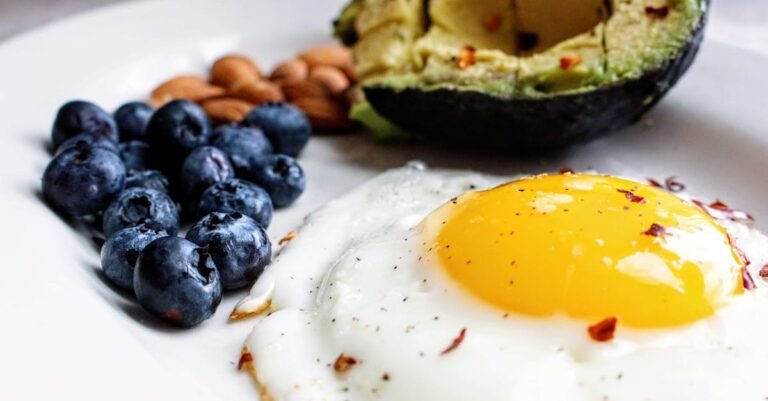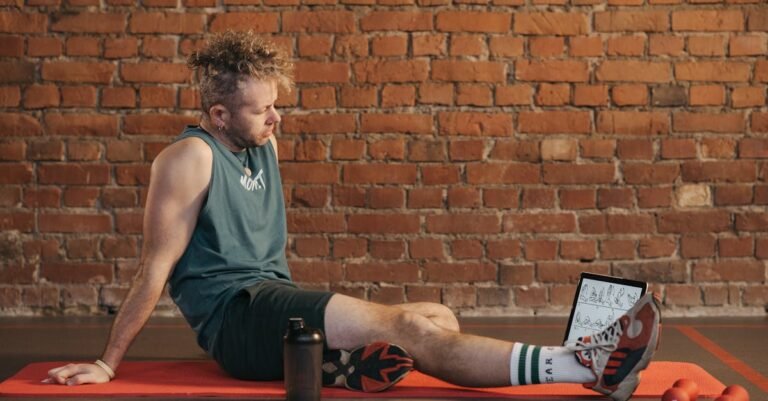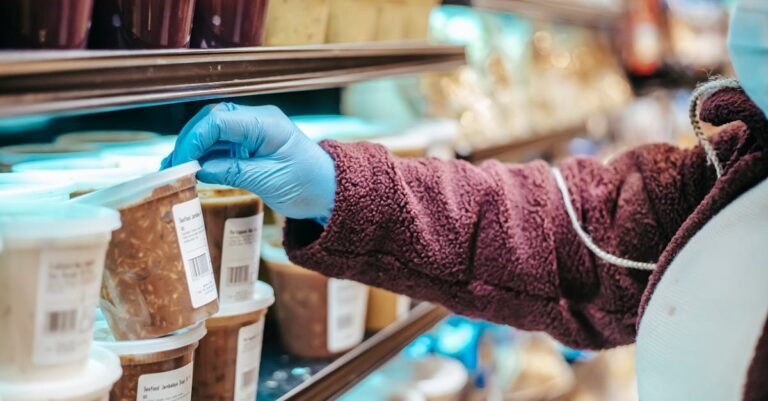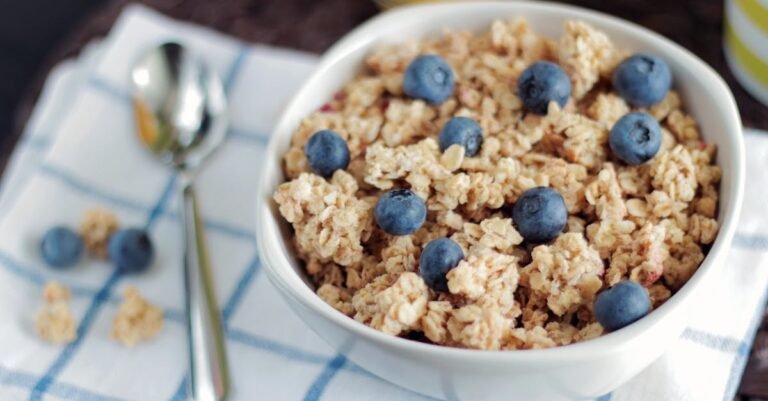Table of Contents
Easy Home Remedies For Muscle Cramps: Your Guide to Quick Relief
What Exactly Are Muscle Cramps, Anyway?
Understanding the Sudden Squeeze
Common Culprits: Why Do Muscles Cramp?
Dehydration Dilemmas
Electrolyte Imbalances Explained
Overexertion and Fatigue
Other Potential Causes
Immediate Relief: What to Do *Right Now*
Stretch It Out: Gentle Elongation Techniques
The Magic of Massage: Self Massage for Cramps
Hydration and Nutrition: The Foundation of Prevention
Water, Water Everywhere: Staying Properly Hydrated
Electrolyte Powerhouses: Foods and Drinks to Consider
Potassium Power Players
Magnesium Marvels
Calcium Contributors
Heat vs. Cold Therapy: Which Works Best?
Warming Up: The Benefits of Heat Application
Cooling Down: When Cold Therapy Is Helpful
Natural Supplements and Aids
Exploring Magnesium Supplementation
Other Potential Supplements (Use with Caution)
Lifestyle Adjustments for Long Term Relief
The Importance of Regular Stretching
Proper Footwear and Support
Listening to Your Body: Avoiding Overexertion
When to Seek Professional Help
Conclusion: Taking Control of Muscle Cramps
Frequently Asked Questions (FAQs)
Q1: Can drinking pickle juice really help muscle cramps?
Q2: Are night leg cramps different from exercise induced cramps?
Q3: How long does it usually take for a muscle cramp to go away with home remedies?
Q4: Can certain medications cause muscle cramps?
Q5: Is it okay to exercise if I’m prone to muscle cramps?
Easy Home Remedies For Muscle Cramps: Your Guide to Quick Relief
Ouch! There it is again. That sudden, involuntary, and often excruciating tightening in your calf, foot, or maybe even your hamstring. Muscle cramps – they can strike anyone, anytime, anywhere. Whether you’re jolted awake in the middle of the night by a charley horse or stopped dead in your tracks during a workout, that intense pain is unmistakable. It feels like your muscle has decided to throw a major tantrum, clenching up with incredible force. But what can you actually do about it, especially when you’re at home and just want the pain to stop? Good news! You often don’t need fancy equipment or expensive treatments. Relief might be closer (and simpler) than you think. Let’s dive into the world of easy home remedies for muscle cramps and get you back to feeling comfortable and mobile.
What Exactly Are Muscle Cramps, Anyway?
Before we jump into fixes, let’s quickly understand what’s happening under the skin. Think of your muscles as bundles of fibers designed to contract and relax, allowing you to move. A muscle cramp, also known as a spasm, is basically a muscle (or sometimes just a part of a muscle) contracting forcefully and refusing to let go. It’s like the muscle gets stuck in the “on” position.
Understanding the Sudden Squeeze
This isn’t just a minor twitch; it’s a strong, often painful, sustained contraction. You might even see or feel a hard lump where the muscle has knotted up. The sensation can range from mildly annoying to downright agonizing, sometimes lasting a few seconds, other times lingering for several minutes or even longer. The most common spots? Legs (especially calves and hamstrings) and feet are notorious targets, but cramps can technically occur in any skeletal muscle – think arms, hands, abdomen, or along the rib cage.
Common Culprits: Why Do Muscles Cramp?
So, why does this muscular mutiny happen? Often, there isn’t one single smoking gun, but rather a combination of factors playing mischief with your muscle function. Some of the usual suspects include:
Dehydration Dilemmas
This is a big one! Think of water as the lubricant for your body’s machinery, including your muscles. When you’re dehydrated, your body fluids become more concentrated, and the communication lines between nerves and muscles can get fuzzy. Less fluid volume also means reduced blood flow to the muscles, potentially leading to irritability and cramping. Are you drinking enough water throughout the day, especially if you’re active or it’s hot outside? Even mild dehydration can sometimes be enough to trigger a cramp.
Electrolyte Imbalances Explained
Electrolytes are minerals in your body that carry an electric charge. They are crucial for nerve signaling and muscle contractions. Key players include sodium, potassium, calcium, and magnesium. When you sweat heavily (like during exercise or on a hot day), you lose not just water but also these vital electrolytes. If you don’t replenish them, the imbalance can disrupt normal muscle function, making cramps more likely. It’s like trying to run complex electronics with low or fluctuating power – things start to glitch, and in your body, that glitch can manifest as a cramp.
Overexertion and Fatigue
Ever push yourself a little too hard during a workout or tackle a physically demanding task you’re not used to? Your muscles might protest later with cramps. Muscle fatigue alters the nervous system’s control over muscle contraction. Overworked muscles can become hyperexcitable, meaning they’re more prone to contracting involuntarily. It’s their way of saying, “Hey, I need a break!”
Other Potential Causes
While dehydration, electrolyte issues, and overexertion are common triggers, other factors can contribute too. Holding a position for a prolonged period (like sitting awkwardly or lying in bed), poor blood circulation (sometimes due to narrowed arteries), nerve compression (like from a pinched nerve in your spine), certain medical conditions (like thyroid issues or kidney disease), and even some medications (like diuretics or statins) can increase your susceptibility to cramps. Pregnancy is also often associated with increased leg cramps.
Immediate Relief: What to Do *Right Now*
Okay, a cramp has struck. Forget prevention for a second – you need relief, stat! What can you do in the heat (or rather, the pain) of the moment?
Stretch It Out: Gentle Elongation Techniques
Your first instinct might be the right one: stretch the cramping muscle. The goal is to gently lengthen the muscle fibers that are violently contracting. Don’t force it aggressively, but apply steady, gentle pressure.
- For a calf cramp (charley horse): Sit or lie down with your leg straight out. Gently pull your toes towards your shin. You can use your hands or loop a towel around your foot to help pull. Alternatively, stand facing a wall a couple of feet away, place your hands on the wall, and step back with the cramping leg, keeping it straight and your heel on the floor. Lean into the wall until you feel a stretch in your calf.
- For a hamstring cramp (back of thigh): Sit on the floor with the cramping leg extended straight and the other leg bent. Lean forward from your hips, reaching towards your toes on the straight leg. Keep your back relatively straight.
- For a foot cramp: Try pulling your toes upward towards your shin. If the cramp is in the arch, try standing up and putting weight on the foot, or rolling your foot over a tennis ball or water bottle.
Hold the stretch for 15-30 seconds, release gently, and repeat if necessary until the cramp eases.
The Magic of Massage: Self Massage for Cramps
While stretching lengthens the muscle, massage can help relax it and improve blood flow to the area. Gently knead the cramped muscle with your hands. Use your thumbs to apply firm, circular pressure to the tightest part of the muscle. You can also try gently squeezing and releasing the muscle. Don’t massage so hard that it causes more pain, but aim for firm, relaxing pressure. Combining gentle stretching with massage often provides the quickest relief.
Hydration and Nutrition: The Foundation of Prevention
While immediate relief tactics are great, wouldn’t it be better to stop cramps before they even start? Absolutely! And the cornerstones of prevention lie in what you drink and eat.
Water, Water Everywhere: Staying Properly Hydrated
We mentioned dehydration as a major culprit, so staying hydrated is non negotiable. How much water is enough? The old “eight glasses a day” is a decent starting point, but your individual needs vary based on activity level, climate, and overall health. A better gauge is the color of your urine – aim for pale yellow or clear. If it’s consistently dark yellow, you likely need to drink more. Sip water throughout the day rather than chugging large amounts at once. And remember, if you’re exercising intensely or sweating a lot, you need to replace those lost fluids promptly. Don’t wait until you feel thirsty; thirst is often a sign that dehydration has already begun.
Electrolyte Powerhouses: Foods and Drinks to Consider
Water is crucial, but sometimes it’s not enough, especially if you’re losing electrolytes through sweat. Ensuring your diet is rich in key minerals can make a big difference. Forget sugary sports drinks unless you’re doing prolonged, intense exercise; often, whole foods are your best bet.
Potassium Power Players
Potassium plays a vital role in nerve communication and muscle contraction. Low potassium levels can contribute to muscle weakness and cramping. Good sources include:
- Bananas (the classic cramp fighter!)
- Potatoes and sweet potatoes (especially with the skin on)
- Spinach and other leafy greens
- Avocados
- Beans and lentils
- Oranges and orange juice
- Tomatoes
- Yogurt
Magnesium Marvels
Magnesium is essential for muscle relaxation; it acts as a natural calcium blocker, helping muscle cells relax after contracting. Many people don’t get enough magnesium in their diets. Boost your intake with:
- Nuts and seeds (almonds, cashews, pumpkin seeds)
- Whole grains (brown rice, oats)
- Legumes (black beans, edamame)
- Dark chocolate (yes, really!)
- Leafy green vegetables (spinach, Swiss chard)
- Avocado
Calcium Contributors
Calcium isn’t just for bones; it’s also critical for muscle contraction. While deficiency severe enough to cause cramps is less common than magnesium or potassium issues, ensuring adequate intake is still important. Find calcium in:
- Dairy products (milk, cheese, yogurt)
- Fortified plant based milks (almond, soy, oat)
- Leafy greens (kale, collard greens)
- Sardines and canned salmon (with bones)
- Tofu (calcium set)
Sodium is also an electrolyte lost in sweat, but most people get plenty (often too much) in their diets. Focus on potassium, magnesium, and calcium from whole food sources for better cramp prevention.
Heat vs. Cold Therapy: Which Works Best?
When a cramp hits or lingers, applying temperature therapy can offer significant relief. But should you reach for the heating pad or the ice pack?
Warming Up: The Benefits of Heat Application
Heat is generally preferred for muscle cramps, especially once the initial intense spasm has subsided or for lingering tightness. Heat works by:
- Increasing blood flow: Warmth dilates blood vessels, bringing more oxygen and nutrients to the muscle and helping to flush out waste products that might contribute to soreness.
- Relaxing muscles: Heat can soothe muscle tension and reduce stiffness, making the muscle less likely to spasm again.
Try applying a heating pad (on a low or medium setting, never directly on the skin), taking a warm bath or shower, or soaking the affected area in warm water (adding Epsom salts, which contain magnesium, can be extra soothing). Apply heat for 15-20 minutes at a time.
Cooling Down: When Cold Therapy Is Helpful
While heat is often the go to, cold therapy (cryotherapy) can sometimes be beneficial, particularly if the cramp was severe and caused some inflammation or if it occurred during intense exercise. Cold works by:
- Numbing the area: Cold constricts blood vessels and temporarily reduces nerve activity, which can dull the sharp pain of a cramp.
- Reducing inflammation: If there’s any minor muscle damage or swelling from the cramp, cold can help minimize it.
Apply an ice pack wrapped in a thin towel (never directly on the skin) to the cramped area for 10-15 minutes. Some people find alternating between heat and cold provides the most relief.
Natural Supplements and Aids
While getting nutrients from food is always best, sometimes supplements might be considered, especially if dietary intake is low or needs are high. Always talk to your doctor before starting any new supplement, as they can interact with medications or have side effects.
Exploring Magnesium Supplementation
Given magnesium’s role in muscle relaxation and the prevalence of dietary insufficiency, magnesium supplements are often discussed for cramp prevention, particularly night leg cramps. Forms like magnesium citrate or glycinate are generally well absorbed. However, research results are mixed, and it doesn’t work for everyone. Too much magnesium can cause digestive upset (like diarrhea). Start with a low dose if recommended by your healthcare provider.
Other Potential Supplements (Use with Caution)
Some people explore other supplements like potassium, calcium, vitamin E, or B vitamins. However, evidence for their effectiveness specifically for common muscle cramps is often limited or inconclusive. It’s crucial to address potential deficiencies through diet first and only supplement under medical guidance, as excessive intake of certain minerals or vitamins can be harmful.
Lifestyle Adjustments for Long Term Relief
Beyond immediate fixes and nutrition, some simple lifestyle tweaks can significantly reduce your frequency of muscle cramps.
The Importance of Regular Stretching
If you’re prone to cramps, especially night leg cramps, incorporating regular stretching into your routine can make a world of difference. Focus on stretching the muscles that tend to cramp most often (like your calves and hamstrings). Aim to stretch daily, especially before bed if night cramps are your nemesis. Gentle activities like yoga or tai chi can also improve flexibility and potentially reduce cramping. Remember to warm up briefly before stretching and stretch gently after exercise.
Proper Footwear and Support
Believe it or not, what you wear on your feet can impact your leg muscles. Shoes that lack adequate support or fit poorly can strain the muscles in your feet and legs, potentially contributing to cramps. Ensure your everyday shoes and athletic shoes provide good arch support and cushioning. If you stand for long periods, consider supportive insoles.
Listening to Your Body: Avoiding Overexertion
As we discussed, pushing your muscles too hard, too fast is a recipe for cramps. Learn to recognize your body’s signals of fatigue. Gradually increase the intensity and duration of your workouts. Allow for proper rest and recovery between periods of strenuous activity. If you’re starting a new exercise program, take it slow and steady. Hydrate well before, during, and after exercise, and consider adding electrolytes if you’re sweating heavily or exercising for over an hour.
When to Seek Professional Help
Most muscle cramps are harmless and resolve with home care. However, you should see a doctor if your cramps are:
- Severe and debilitating
- Frequent and not improving with home remedies
- Associated with muscle weakness, swelling, redness, or numbness
- Not clearly related to exercise or dehydration
- Disturbing your sleep significantly
Persistent or unusual cramps could signal an underlying medical condition that needs investigation, such as circulation problems, nerve issues, thyroid disorders, or medication side effects.
Conclusion: Taking Control of Muscle Cramps
Muscle cramps can be a real pain, literally stopping you in your tracks. But the power to manage and prevent them often lies right in your own hands. By understanding the common triggers like dehydration and electrolyte imbalances, you can take proactive steps with hydration and nutrition. Knowing how to respond immediately with gentle stretching and massage can bring quick relief when a cramp strikes. Incorporating preventative measures like regular stretching, choosing supportive footwear, listening to your body, and considering heat therapy can significantly reduce their frequency and severity. While most cramps are benign, don’t hesitate to seek medical advice if they become persistent or severe. With these easy home remedies and lifestyle adjustments, you can feel more confident in managing muscle cramps and keeping your muscles happy, healthy, and cramp free!
Frequently Asked Questions (FAQs)
Q1: Can drinking pickle juice really help muscle cramps?
A: Surprisingly, there’s some anecdotal evidence and preliminary research suggesting it might! The theory is that the high sodium and vinegar content in pickle juice could trigger nerve receptors in the throat, sending signals that interrupt the cramping mechanism. It might work faster than replenishing fluids or electrolytes traditionally. While not a guaranteed cure for everyone, some athletes swear by it for rapid relief during or after intense exercise. It’s generally safe to try a small amount (a few ounces).
Q2: Are night leg cramps different from exercise induced cramps?
A: While both involve involuntary muscle contractions, their triggers can differ. Exercise induced cramps are often linked directly to muscle fatigue, dehydration, and electrolyte loss during physical activity. Night leg cramps (nocturnal leg cramps) often occur at rest, and their exact cause is sometimes unclear, though dehydration, electrolyte imbalances, nerve issues, certain medications, and prolonged sitting or awkward sleeping positions are often implicated. However, many home remedies, like stretching and ensuring adequate hydration and mineral intake (especially magnesium and potassium), can help with both types.
Q3: How long does it usually take for a muscle cramp to go away with home remedies?
A: The intense pain of an active muscle cramp often subsides within seconds to a few minutes, especially if you immediately stretch and gently massage the affected muscle. Lingering soreness or tightness might last longer, potentially for a few hours or even a day or two, particularly if the cramp was severe. Applying heat can help soothe this residual discomfort.
Q4: Can certain medications cause muscle cramps?
A: Yes, muscle cramps can be a side effect of various medications. Diuretics (water pills) are common culprits because they can lead to fluid and electrolyte loss. Statins (used to lower cholesterol), some asthma medications (like albuterol), and certain drugs used to treat Alzheimer’s disease or high blood pressure can also potentially cause cramps in some individuals. If you suspect your medication might be contributing to cramps, talk to your doctor; don’t stop taking any prescribed medication without consulting them first.
Q5: Is it okay to exercise if I’m prone to muscle cramps?
A: Yes, absolutely! In fact, regular exercise can improve circulation and muscle conditioning, potentially reducing cramp frequency in the long run. The key is to be smart about it. Warm up properly before exercising, cool down and stretch afterward, stay well hydrated, replenish electrolytes if needed (especially for long or intense sessions), and gradually increase exercise intensity rather than suddenly overdoing it. Listen to your body and don’t push through sharp pain.










